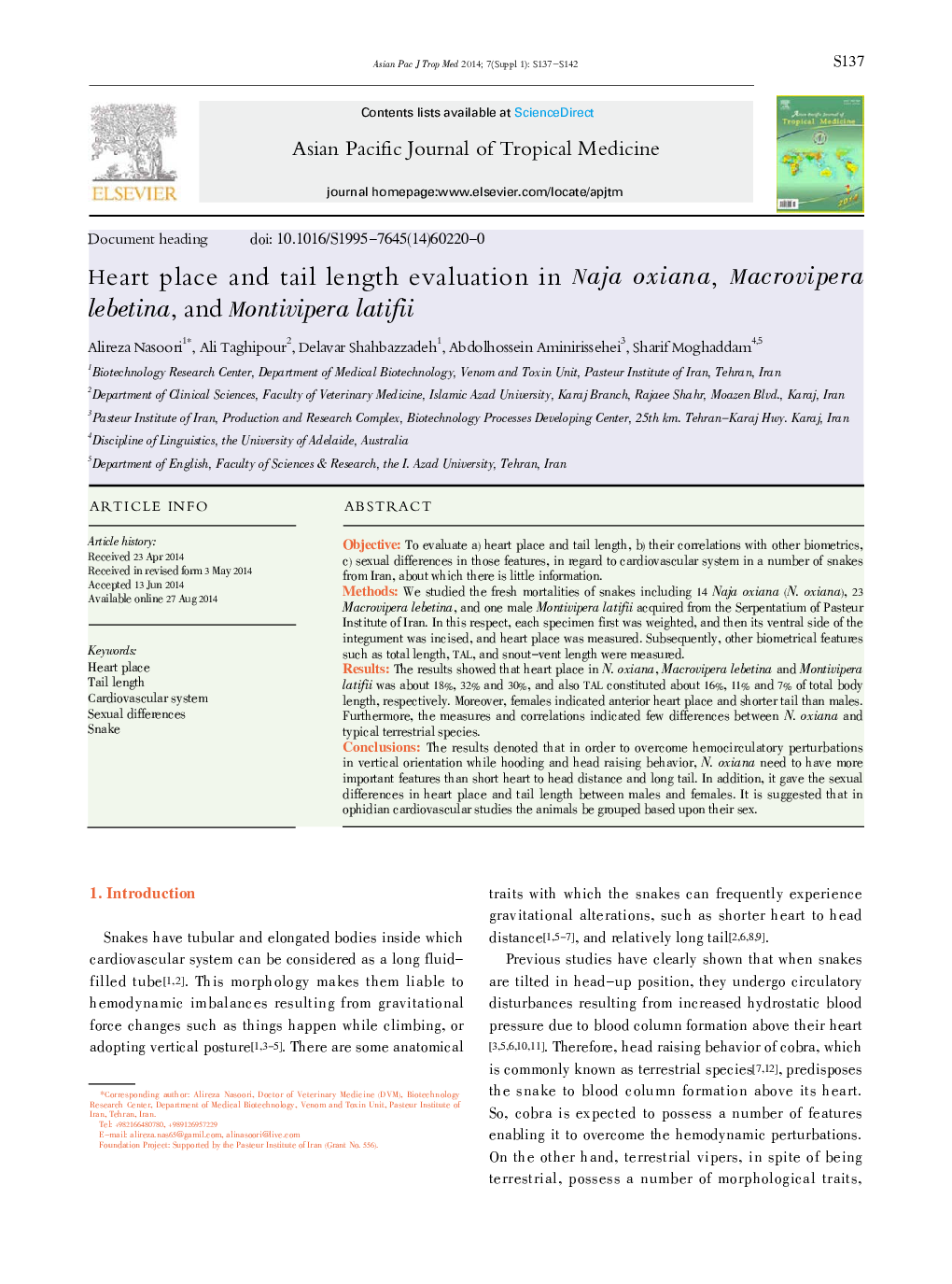| کد مقاله | کد نشریه | سال انتشار | مقاله انگلیسی | نسخه تمام متن |
|---|---|---|---|---|
| 3455920 | 1596033 | 2014 | 6 صفحه PDF | دانلود رایگان |

ObjectiveTo evaluate a) heart place and tail length, b) their correlations with other biometrics, c) sexual differences in those features, in regard to cardiovascular system in a number of snakes from Iran, about which there is little information.MethodsWe studied the fresh mortalities of snakes including 14 Naja oxiana (N. oxiana), 23 Macrovipera lebetina, and one male Montivipera latifii acquired from the Serpentatium of Pasteur Institute of Iran. In this respect, each specimen first was weighted, and then its ventral side of the integument was incised, and heart place was measured. Subsequently, other biometrical features such as total length, TAL, and snout-vent length were measured.ResultsThe results showed that heart place in N. oxiana, Macrovipera lebetina and Montivipera latifii was about 18%, 32% and 30%, and also TAL constituted about 16%, 11% and 7% of total body length, respectively. Moreover, females indicated anterior heart place and shorter tail than males. Furthermore, the measures and correlations indicated few differences between N. oxiana and typical terrestrial species.ConclusionsThe results denoted that in order to overcome hemocirculatory perturbations in vertical orientation while hooding and head raising behavior, N. oxiana need to have more important features than short heart to head distance and long tail. In addition, it gave the sexual differences in heart place and tail length between males and females. It is suggested that in ophidian cardiovascular studies the animals be grouped based upon their sex.
Journal: Asian Pacific Journal of Tropical Medicine - Volume 7, Supplement 1, September 2014, Pages S137-S142